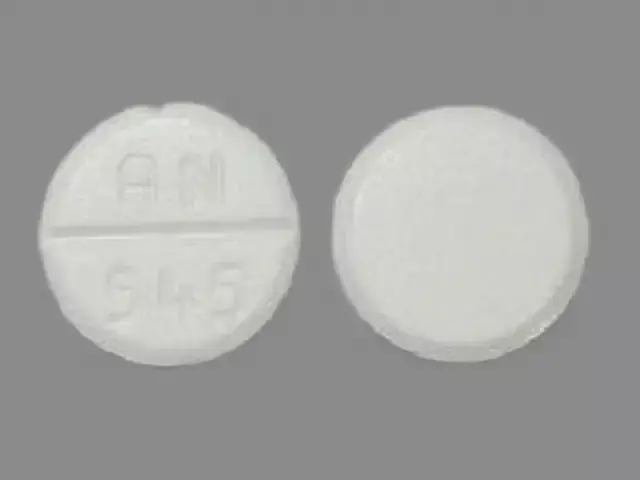- Author Rachel Wainwright [email protected].
- Public 2023-12-15 07:39.
- Last modified 2025-11-02 20:14.
Alpha Lipon
Instructions for use:
- 1. Release form and composition
- 2. Indications for use
- 3. Contraindications
- 4. Method of application and dosage
- 5. Side effects
- 6. Special instructions
- 7. Drug interactions
- 8. Terms and conditions of storage

Alfa-Lipon is a drug that affects the digestive system and metabolic processes.
Release form and composition
Dosage form - film-coated tablets:
- 300 mg: round, convex on both sides, yellow;
- 600 mg: oblong, convex on both sides, yellow in color, with risks on both sides.
Tablets are packed in 10 and 30 pcs. in blisters, respectively 3 or 1 blister are packed in a cardboard box.
Active ingredient: alpha-lipoic (thioctic) acid, in 1 tablet - 300 mg or 600 mg.
Auxiliary components: microcrystalline cellulose, sodium lauryl sulfate, sodium croscarmellose, anhydrous colloidal silicon dioxide, corn starch, lactose monohydrate, magnesium stearate.
Shell composition: mixture for film coating Opadry II Yellow [hypromellose (hydroxypropyl methylcellulose), lactose monohydrate, triacetin, polyethylene glycol (macrogol), titanium dioxide (E 171), sunset yellow FCF (E 110), indigotin (E 132), quinoline yellow (E 104)].
Indications for use
Alpha-Lipon is a drug for the treatment of paresthesia in diabetic polyneuropathy.
Contraindications
- galactose intolerance, glucose-galactose malabsorption syndrome, lactase deficiency;
- childhood;
- pregnancy and breastfeeding;
- hypersensitivity to drug components.
Method of administration and dosage
Alfa-Lipon should be taken by mouth, swallowing the tablets whole and drinking plenty of fluids, 30 minutes before breakfast. It is especially important to take the drug before meals for patients who experience prolonged gastric emptying, since food makes it difficult for the absorption of alpha-lipoic acid.
Adults are usually prescribed 600 mg (1 tablet of 600 mg or 2 tablets of 300 mg) once a day.
Side effects
- on the part of metabolism: a decrease in blood sugar levels, symptoms indicating the development of a hypoglycemic state - dizziness, blurred vision, headache, increased sweating;
- from the gastrointestinal tract: gastrointestinal pain, nausea, abdominal pain, diarrhea, vomiting;
- from the immune system: allergic reactions, including shortness of breath, skin rash, itching, urticaria (urticaria);
- from the nervous system: disturbance or change in taste;
- others: eczema.
special instructions
With intense paresthesias, treatment can be started with parenteral administration of alpha-lipoic acid, using appropriate dosage forms of other drugs.
At the beginning of treatment, a short-term increase in paresthesias with a feeling of "creeping" is possible.
Patients with diabetes mellitus during therapy should monitor the concentration of glucose in the blood. In some cases, in order to avoid the development of hypoglycemia, it may be necessary to reduce the dose of the antidiabetic agent.
Alcohol is a significant risk factor for the development and progression of polyneuropathy. In addition, it can reduce the effectiveness of the therapy. Therefore, during the period of taking Alfa-Lipon, you should refrain from drinking alcohol.
Due to the risk of such a side effect as hypoglycemia (visual impairment and dizziness), during treatment, it is recommended to be careful when driving and engaging in other potentially hazardous activities that require speed of psychophysical reactions and increased attention.
Drug interactions
Alpha Lipon may decrease the effectiveness of cisplatin.
The drug should not be used concurrently with dairy products and metal compounds, for example, food supplements containing magnesium or iron. If the need for supplementation is justified, it should be taken in the afternoon or evening (while Alfa-Lipon is recommended in the morning).
Thioctic acid can enhance the hypoglycemic effect of insulin and oral antidiabetic agents in diabetic patients, so blood sugar should be closely monitored, especially at the beginning of treatment.
To avoid the development of symptoms of hypoglycemia, in some cases, it may be necessary to reduce the dose of insulin or an oral antidiabetic agent.
Terms and conditions of storage
Store in its original packaging, out of reach of children, in a dark and dry place at room temperature (18-25 ºС).
Shelf life is 2 years.
Information about the drug is generalized, provided for informational purposes only and does not replace the official instructions. Self-medication is hazardous to health!






